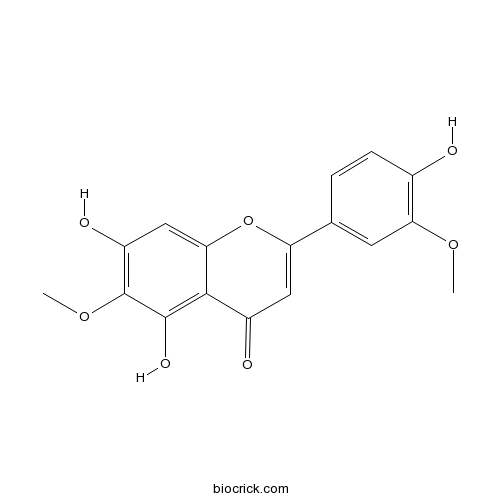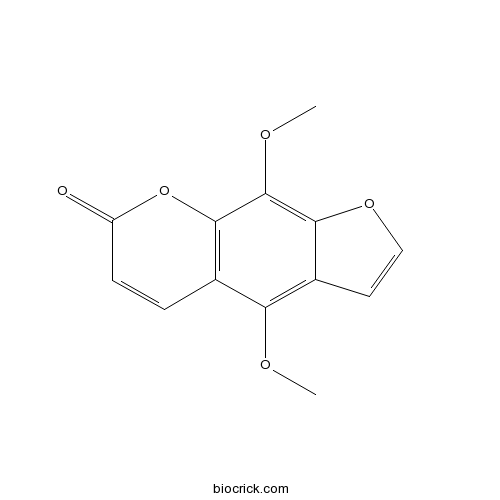Saussurea involucrata
Saussurea involucrata
1. The products in our compound library are selected from thousands of unique natural products; 2. It has the characteristics of diverse structure, diverse sources and wide coverage of activities; 3. Provide information on the activity of products from major journals, patents and research reports around the world, providing theoretical direction and research basis for further research and screening; 4. Free combination according to the type, source, target and disease of natural product; 5. The compound powder is placed in a covered tube and then discharged into a 10 x 10 cryostat; 6. Transport in ice pack or dry ice pack. Please store it at -20 °C as soon as possible after receiving the product, and use it as soon as possible after opening.
Natural products/compounds from Saussurea involucrata
- Cat.No. Product Name CAS Number COA
-
BCN2529
Jaceosidin18085-97-7
Instructions

-
BCN5568
Isopimpinellin482-27-9
Instructions

Therapeutic effects of Saussurea involucrata injection against severe acute pancreatitis- induced brain injury in rats.[Pubmed: 29494987]
To observe the therapeutic effects of Saussurea involucrata (Sau) injection against severe acute pancreatitis (SAP)-induced brain injury.
De Novo Transcriptome Sequencing and the Hypothetical Cold Response Mode of Saussurea involucrata in Extreme Cold Environments.[Pubmed: 28590406]
None
Cloning and characterization of SiDHN, a novel dehydrin gene from Saussurea involucrata Kar. et Kir. that enhances cold and drought tolerance in tobacco.[Pubmed: 28167030]
Saussurea involucrata Kar. et Kir. is a hardy, dicotyledonous plant featured by strong tolerance to severe stress conditions. In a previous study, we created a cDNA library to characterize genetic factors associated with the cold acclimation response of S. involucrata. The full-length cDNA of one dehydrin-like gene, SiDHN, was obtained by RT-PCR and the SiDHN gene was further characterized in this study. The full-length SiDHN cDNA consists of 703 base pairs (bp) with a 333bp open reading frame encoding a protein comprising 111 amino acid residues. The alignment of the deduced amino acid sequence showed that SiDHN protein shared 36% identity with one homolog in Helianthus annuus. To evaluate its biological functions, 35S:SiDHN recombinant plasmid was introduced into tobacco using Agrobacterium tumefaciens and the resistance of transgenic plants to freezing and drought stresses were analyzed. Compared with the wild-type, transgenic tobacco plants showed greater resistance to freezing and drought stresses. In this study, we provided evidence that SiDHN can enhance plant cold and drought resistance, suggesting that SiDHN could be potentially used to genetically improve plant tolerance to abiotic stresses.
New Role of Hispidulin in Lipid Metabolism: PPARα Activator.[Pubmed: 27744606]
Hispidulin is a naturally occurring flavonoid isolated from a traditional Chinese medicinal herb, Saussurea involucrata. In this study, the regulating role of hispidulin on the mRNA expression level of enzymes involved in lipid metabolism was examined in vitro and in vivo. Moreover, the in vivo lipid-modulating effect of hispidulin was compared with that of fenofibrate, a classical PPARα agonist. Our results in present study demonstrated that hispidulin can directly bind to and activate PPARα as an agonist and thus modulate the downstream lipid-metabolizing genes. Moreover, hispidulin could attenuate dyslipidemia in high fat diet induced dyslipidemia rat model. Although further studies are needed, this study provided evidence for the potential use of hispidulin in dyslipidemia management.
Inhibitory effects of Saussurea involucrata (Kar. et Kir.) Sch. -Bip. on adjuvant arthritis in rats.[Pubmed: 27616030]
Saussurea involucrate (Kar. et Kir.) Sch. -Bip is an endangered species of the Compositae family, and this species has long been used for the treatment of rheumatoid arthritis, dysmenorrhea, stomachache, and altitude sickness in Uighur folk and Chinese medicine.
The complete chloroplast genome of Tianshan Snow Lotus (Saussurea involucrata), a famous traditional Chinese medicinal plant of the family Asteraceae.[Pubmed: 26713569]
abtract We decoded the complete chloroplast DNA (cpDNA) sequence of the Tianshan Snow Lotus (Saussurea involucrata), a famous traditional Chinese medicinal plant of the family Asteraceae, by using next-generation sequencing technology. The genome consists of 152 490 bp containing a pair of inverted repeats (IRs) of 25 202 bp, which was separated by a large single-copy region and a small single-copy region of 83 446 bp and 18 639 bp, respectively. The genic regions account for 57.7% of whole cpDNA, and the GC content of the cpDNA was 37.7%. The S. involucrata cpDNA encodes 114 unigenes (82 protein-coding genes, 4 rRNA genes, and 28 tRNA genes). There are eight protein-coding genes (atpF, ndhA, ndhB, rpl2, rpoC1, rps16, clpP, and ycf3) and five tRNA genes (trnA-UGC, trnI-GAU, trnK-UUU, trnL-UAA, and trnV-UAC) containing introns. A phylogenetic analysis of the 11 complete cpDNA from Asteracease showed that S. involucrata is closely related to Centaurea diffusa (Diffuse Knapweed). The complete cpDNA of S. involucrata provides essential and important DNA molecular data for further phylogenetic and evolutionary analysis for Asteraceae.
[Protective Effect of Saussurea involucrata Alcohol Extract on Liver Mitochondria in Mice Under Hypoxia Condition].[Pubmed: 26672349]
To study the protective effect of Saussurea involucrata alcohol extract on liver mitochondria in mice under hypoxia condition.


